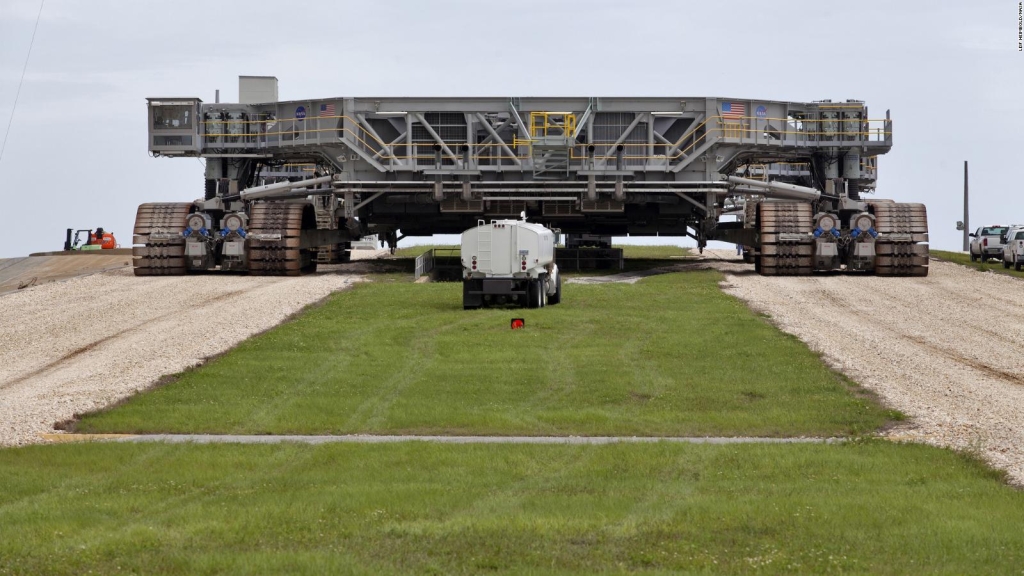() — The Artemis I lunar megarocket has arrived at the NASA launch pad in Florida and this time it is to take off on a trip around the Moon.
Engineers and technicians involved in the project have been busy with final checkouts and tests of the Space Launch System rocket and Orion spacecraft inside the Vehicle Assembly Building at NASA’s Kennedy Space Center in Florida. The rocket made a pair of trips to the launch pad in March and June for dress rehearsal, a test that simulated every step of launch without liftoff.
On Tuesday night the real event began.
The Artemis team is targeting the first two-hour launch window, from 8:33 a.m. to 10:33 a.m. ET on Monday, August 29. There are pre-order launch windows on September 2 and September 5.
The massive 98-meter-tall structure embarked on a slow 6.4-kilometer journey aboard one of NASA’s giant Apollo-era caterpillar tracks from the assembly building to the launch pad, just like missions of the shuttle and the Apollo Saturn V rockets.
The Artemis I team used Tracked Transporter 2 to move the Mega Rocket to the launch pad.
(Credit: NASA/Leif Heimbold)
The 3 million kg caterpillar transported the huge structure and its mobile launcher at a maximum speed of 1.6 km per hour. He arrived at the launch pad at 7:30 am Miami time on Wednesday, after a nearly 10-hour drive.
The iconic caterpillar is one of two that have operated for more than 50 years at the Kennedy Space Center. The huge transporters were first used in 1965 and can each carry 8.2 million kg, or the weight of more than 20 fully loaded 777 planes, according to NASA.
Now that the rocket has arrived, engineers and technicians will prepare the systems for launch.
The (non-human) crew of the Artemis mission
The uncrewed Artemis I will be launched on a mission that will go beyond the Moon and back to Earth. Once launched, the spacecraft will reach a far retrograde orbit around the Moon, traveling 2.1 million km over the course of 42 days. Artemis I will perform in the Pacific Ocean off the coast of San Diego on October 10. Orion’s return will be faster and hotter than any spacecraft has ever experienced on its way back to Earth.
The Orion spacecraft will travel further than any human-built spacecraft has ever flown, reaching 64,000 km beyond the far side of the Moon, according to NASA.
There are no humans on board, but the Orion will carry 54.4 kilograms of memorabilia, including toys, Apollo 11 memorabilia and three mannequins.
In the Orion’s commander’s seat will be Commander Moonikin Campos, a suit dummy who can collect data on what future human crews might experience on a lunar voyage. The mannequin will be wearing the new Orion Crew Survival System suit, designed for astronauts to wear during launch and re-entry. The suit has two radiation sensors.
Two “ghosts” named Helga and Zohar will travel in other seats of Orion. These mannequin torsos are made from materials that mimic the soft tissues, organs, and bones of a woman. The two torsos have more than 5,600 sensors and 34 radiation detectors to measure radiation exposure during spaceflight.
This mission will start the program Artemis NASA, whose goal is to send humans back to the Moon, land the first woman and first person of color on the lunar surface by 2025, and eventually usher in human exploration of Mars.
Artemis I will also carry a number of science experiments, some of which will be installed once the rocket and spacecraft reach the launch pad.













Add Comment